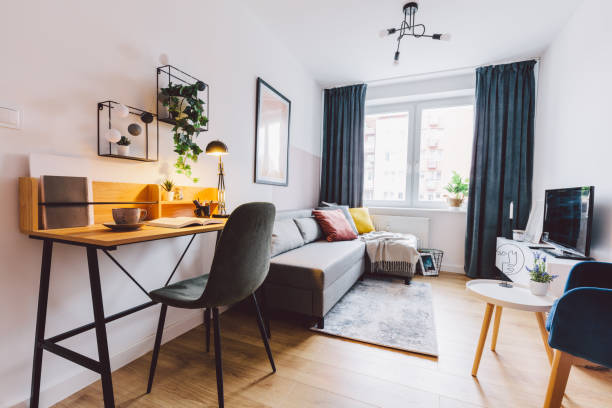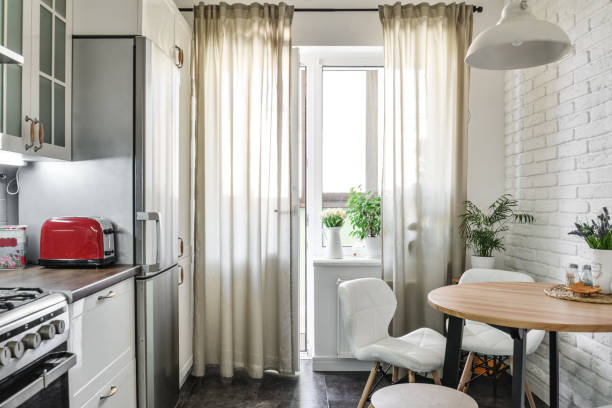Table of Contents
In today’s urban landscape, space is a luxury. As cities grow denser and housing prices climb, many people find themselves living in smaller spaces, whether it’s a compact studio apartment, a tiny home, or a micro-apartment. While small living spaces can pose challenges, they also offer unique opportunities for creativity and efficiency. With thoughtful design and clever solutions, tiny areas can be transformed into functional, comfortable, and even stylish living environments. Here’s how to maximize your small space and make the most of every square inch.

1. Embrace Minimalism
The first and most important step in maximizing a small space is to embrace minimalism. This doesn’t necessarily mean adopting a stark, bare-bones aesthetic, but rather focusing on what truly matters. Begin by decluttering and getting rid of items you don’t need or use. This process not only frees up physical space but also creates a sense of mental clarity. In a small area, every item should serve a purpose, whether functional or decorative.
Consider furniture that doubles as storage, such as a bed with drawers underneath or a coffee table with a lift-top. This approach allows you to keep essentials close at hand without sacrificing valuable floor space.
2. Opt for Multi-Functional Furniture
In small spaces, every piece of furniture needs to work overtime. Multi-functional furniture is key to maximizing functionality without overcrowding the room. Look for pieces that can serve more than one purpose. For example, a sofa bed can provide seating during the day and transform into a guest bed at night. A fold-out dining table can be tucked away when not in use, freeing up space for other activities.
Wall-mounted desks and foldable chairs are great options for creating a home office in a small apartment. When not in use, these items can be stowed away, making the room feel larger and more open.

3. Utilize Vertical Space
When floor space is limited, look up. Vertical space is often underutilized in small areas, but it can be a game-changer when it comes to storage and organization. Install shelves, cabinets, and hooks high up on the walls to keep items off the floor and countertops. Tall bookshelves, hanging pot racks, and wall-mounted organizers are all excellent ways to make the most of vertical space.
In the kitchen, consider adding a pegboard for hanging utensils, pots, and pans. This not only saves cabinet space but also adds a unique visual element to the room. In the bedroom, a lofted bed can create additional space underneath for a desk, seating area, or storage.
4. Maximize Natural Light
Natural light has the power to make any space feel larger and more inviting. In small areas, maximizing natural light is essential for creating an open and airy atmosphere. Keep window treatments light and minimal, allowing as much sunlight as possible to flood the room. Mirrors are also an effective tool for enhancing natural light, as they reflect light and create the illusion of a larger space.
If natural light is limited, focus on creating a well-lit environment with artificial lighting. Layered lighting, including overhead lights, floor lamps, and table lamps, can help brighten dark corners and add depth to the room.
5. Create Zones
In a small space, it can be challenging to define different areas for various activities. However, creating distinct zones is important for maintaining functionality and order. Use furniture, rugs, and lighting to delineate different areas within the space. For example, a rug can define a living area, while a strategically placed bookshelf can separate a workspace from the rest of the room.
If you’re working with an open floor plan, consider using curtains, sliding doors, or room dividers to create privacy and separate spaces. This approach allows you to have multiple functional areas within one room, without the need for permanent walls.

6. Invest in Custom-Built Solutions
Custom-built furniture and storage solutions can be a worthwhile investment in small spaces. Tailoring pieces to fit your specific needs and the dimensions of your space can make a significant difference in both functionality and aesthetics. Custom solutions can include built-in shelving, under-stair storage, or a Murphy bed that folds away when not in use.
While custom-built solutions may come with a higher price tag, they often pay off in the long run by maximizing every inch of space and reducing the need for additional furniture.
7. Keep it Simple and Cohesive
When decorating a small space, it’s important to maintain a sense of cohesion and simplicity. Too many patterns, colors, and decorative elements can make a small area feel chaotic and cramped. Stick to a neutral color palette with pops of color for accents. Light colors, especially white, can make a room feel larger and more open.
Choose a few statement pieces rather than cluttering the space with too many small items. For example, a bold piece of artwork or a unique piece of furniture can add personality without overwhelming the room.
8. Think Outside the Box
Finally, don’t be afraid to think creatively when it comes to small space solutions. Repurposing items, DIY projects, and unconventional design ideas can lead to some of the most innovative and effective solutions. For example, a ladder can be used as a bookshelf, or a vintage trunk can serve as both a coffee table and storage.
Small spaces require a bit of ingenuity, but with the right mindset and approach, they can be just as comfortable, functional, and stylish as larger homes. By embracing minimalism, utilizing multi-functional furniture, and making the most of vertical space, you can create a small space that feels open, organized, and uniquely yours.

